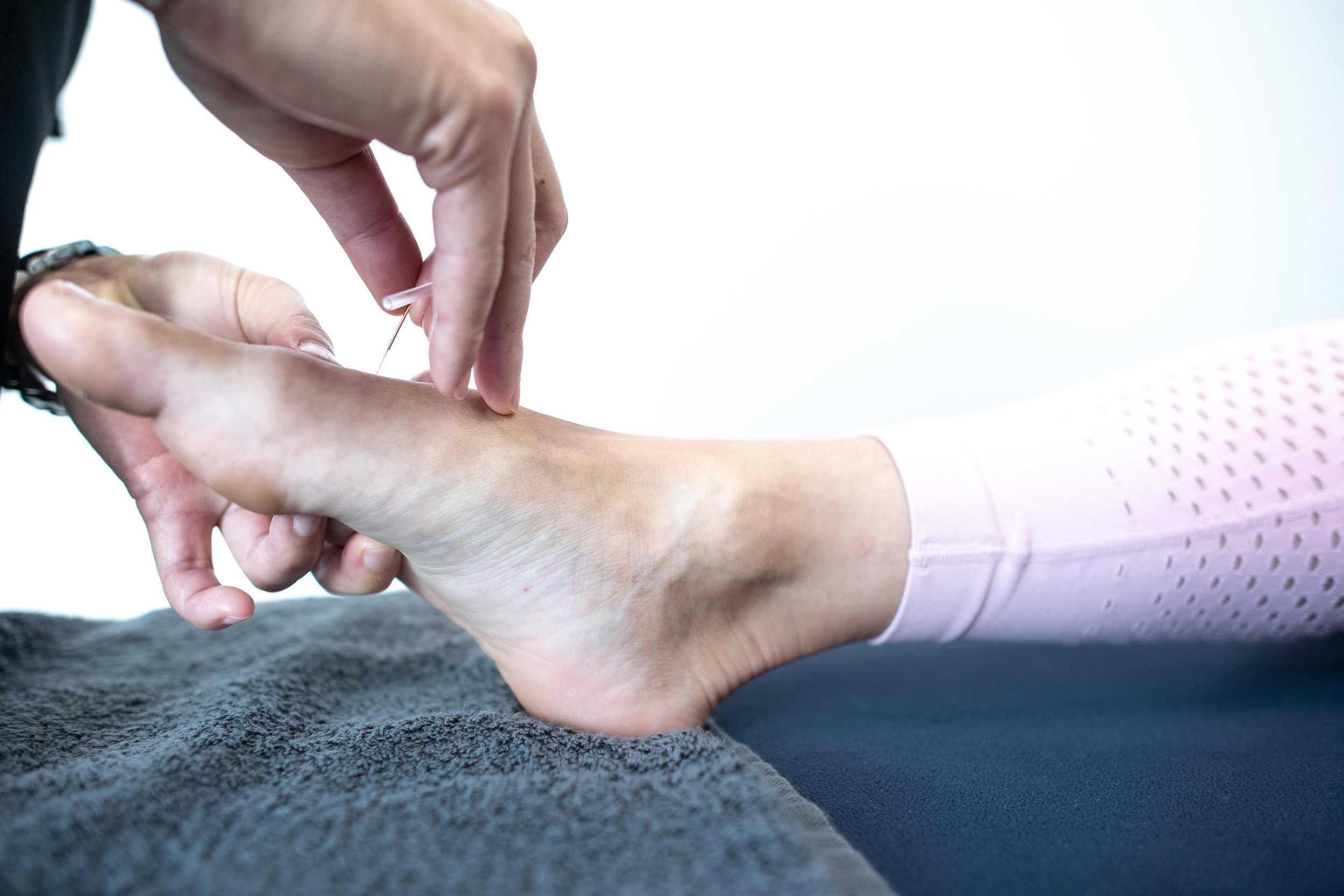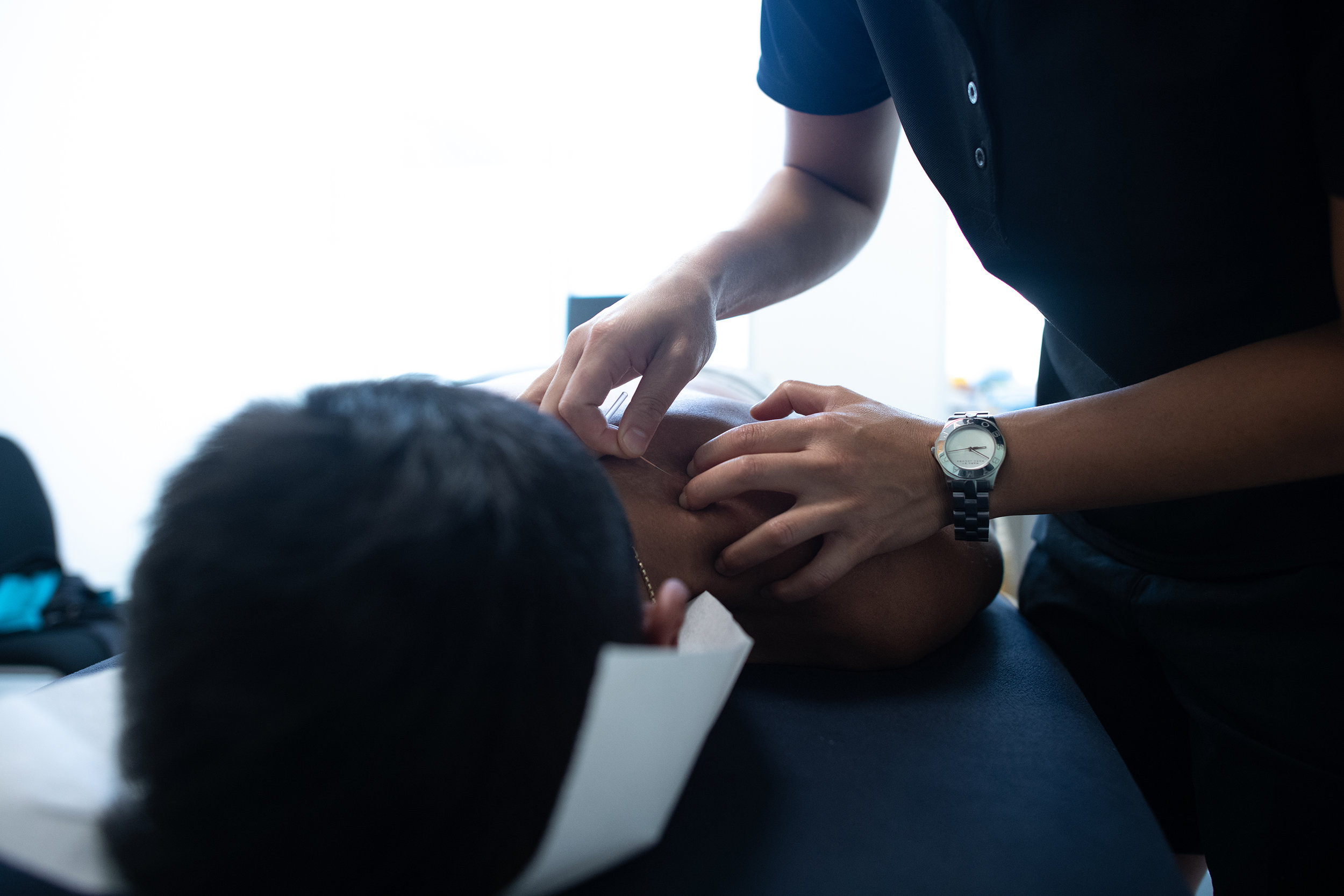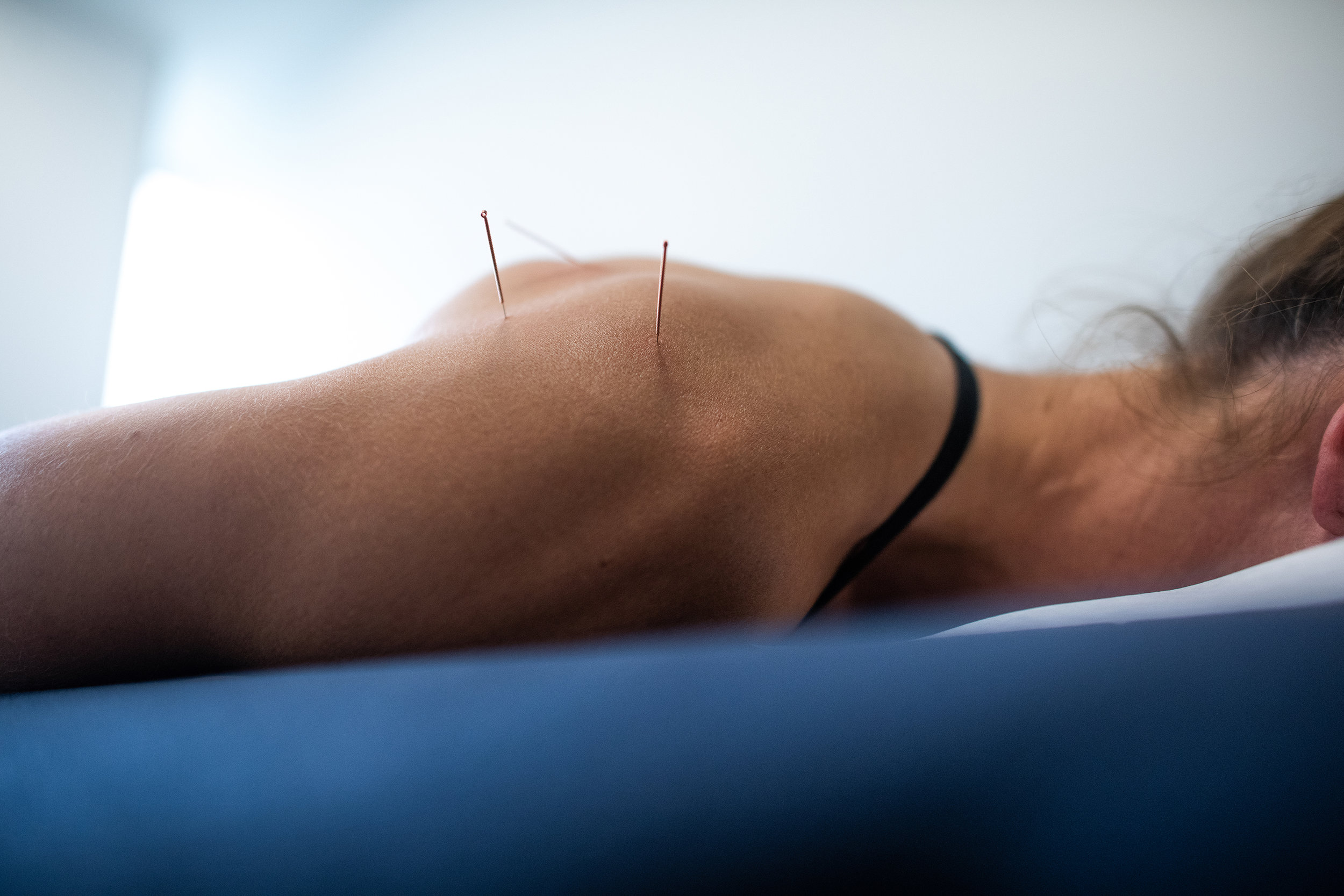Dry Needling & Acupuncture
Acupuncture is a traditional Chinese healing technique which has been effectively used for many thousands of years. Today, Acupuncture is an effective alternative and complementary treatment regime used to treat various conditions including musculoskeletal pain.
Traditional Chinese Acupuncture practice involves the insertion of fine sterile needles into nerve rich acupuncture points with its principles of balancing positive and negative energy (Yin/Yang), and the promotion of healthy flow of (Qi) and Blood in acupuncture meridians and organ. This process is to alter and adjust the body’s energy flow into a healthier pattern of balance to reduce pain caused by stagnant Qi.
Dry Needling: Acupuncture from a Western Point of View
When an acupuncturist inserts the needle into skin and muscle, it can have an effect on muscle or nerves. Research shows acupuncture helps to relieve and relax muscles knots also known as trigger points. These trigger points are most commonly found in the lower back muscles, shoulders, elbows, calf, hamstrings, quads and so on. Low back pain, tennis elbow and migraine or tension headaches are some examples of trigger points/ knotted muscles causing pain. Needling to relax these knotted muscles with acupuncture helps to relieve pain and promote healing.
Acupuncture works by stimulating body's natural healing powers and helps the immune system by releasing natural painkillers (endorphins, dopamine, etc.) to balance the endocrine system, affecting spastic muscles and trigger points. Needles are inserted into trigger points which often produces slight muscle twitching that can be accompanied by a numbing or electric travelling sensation at the site of insertion or along the acupuncture channel.
How does acupuncture work?
Acupuncture improves the body’s functions and promotes the natural self-healing process by stimulating specific acupuncture points, or acupoints. Traditional Chinese Medicine (TCM) is based on an ancient philosophy that describes the universe, and the body, in terms of two opposing forces: yin and yang. When these forces are in balance, the body is healthy. Energy, called "qi" (pronounced "chee") flows along specific pathways, called meridians, throughout the body. This constant flow of energy keeps the yin and yang forces balanced. However, if the flow of energy gets blocked, like water getting stuck behind a dam, the disruption can lead to pain, lack of function, or illness.
Acupuncture therapy can release blocked qi in the body and stimulate function, evoking the body’s natural healing response through various physiological systems. Modern research has demonstrated acupuncture’s effects on the nervous system, endocrine and immune systems, cardiovascular system, and digestive system. By stimulating the body’s various systems, acupuncture can help to resolve pain, and improve sleep, digestive function, and sense of well-being.
What conditions are commonly treated by acupuncture?
Hundreds of clinical studies on the benefits of acupuncture show that it successfully treats conditions ranging from musculoskeletal problems (back pain, neck pain, and others) to nausea, migraine headache, anxiety, depression, insomnia, and infertility.
Research carried out in Germany has shown that acupuncture may help relieve tension headaches and migraines
The NCCIH note that it has been proven to help in cases of:
low back pain
neck pain
osteoarthritis
knee pain
headache and migraine
In 2003, the World Health Organization (WHO) listed a number of conditions in which they say acupuncture has been proven effective.
These include:
sprains
tennis elbow
sciatica
The aim of acupuncture is to achieve pain relief via stimulation of the nervous system to produce the body's natural pain relieving chemicals such as endorphin, and potent musculoskeletal pain modulators such as enkephalins, and serotonin to promote well-being. Acupuncture also increases local blood flow to promote tissue healing.





